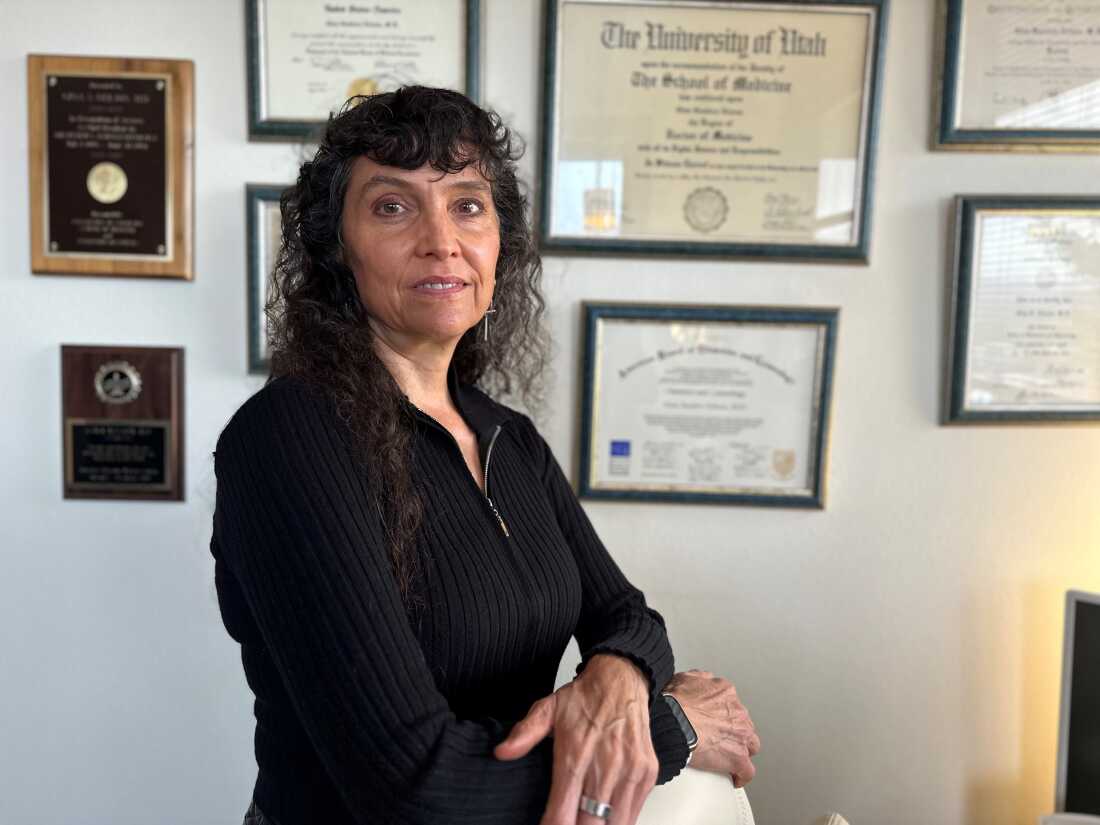More younger adults requesting a vasectomy or tubal ligation after ‘Roe’ overturned : Shots

Sophia Ferst (left) and her wife, Madison Bethke, outside of Helena, Montana. After Roe v. Wade was overturned, Ferst decided to get sterilized. She is one of many people under 30 now seeking permanent contraception.
Shaylee Ragar
hide caption
toggle caption
Shaylee Ragar
Sophia Ferst remembers her reaction to learning that the Supreme Court had overturned Roe v. Wade: She needed to get sterilized.
Within a week, she asked her provider about getting the procedure done.
Ferst, 28, said she has always known she doesn’t want kids. She also worries about getting pregnant as the result of a sexual assault — then being unable to access abortion services.
“That’s not a crazy concept anymore,” she said.
“I think kids are really fun. I even see kids in my therapy practice,” she said. “However, I understand that children are a big commitment.”
In Montana, where Ferst lives, lawmakers have passed several bills to restrict abortion access, which have been tied up in court. Forty-one states have bans or restrictions on abortion, according to the Guttmacher Institute, and anti-abortion groups have advocated for restricting contraception access in recent years.
Uptick in sterilization not just a blip
After Roe was overturned in June 2022, doctors said a wave of young people like Ferst started asking for permanent birth control like tubal ligations, in which the fallopian tubes are removed, or vasectomies.
New research published this spring in JAMA Health Forum shows how big that wave of young people is nationally.
University of Pittsburgh researcher Jackie Ellison and her co-authors used TriNetX, a national medical record database, to look at how many 18- to 30-year-olds were getting sterilized before and after the ruling.
They found sharp increases in both male and female sterilization. Tubal ligations doubled from June 2022 to September 2023, and vasectomies increased over three times during that same time, Ellison said.
Even with that increase, women are still getting sterilized much more often than men. Vasectomies have leveled off at the new higher rate, while tubal ligations still appear to be increasing.
Tubal ligations among young people had been slowly rising for years, but the ruling in Dobbs v. Jackson Women’s Health Organization had a discernible impact.
“We saw a pretty substantial increase in both tubal ligation and vasectomy procedures in response to Dobbs,” Ellison said.
More interest from those without children
The data wasn’t broken out by state.
But in those states, like Montana, where the future of abortion rights is deeply uncertain, OB-GYNs and urologists say they are noticing the phenomenon.
Kalispell, Montana-based OB-GYN Gina Nelson said she’s seeing women of all ages, with and without children, seeking sterilization because of the Supreme Court’s Dobbs decision.
She said the biggest change is among young patients who don’t have children seeking sterilization. She said that’s a big shift from when she started practicing 30 years ago.
Nelson said she believes she is better equipped to talk them through the process now than she was in the 1990s, when she first had a 21-year-old patient ask for sterilization.
“I wanted to respect her rights, but I also wanted her to consider a number of future scenarios,” Nelson said. “So I actually made her write an essay for me, and then she brought it in, jumped through all the hoops, and I tied her tubes.”
Nelson said she doesn’t make patients do that today, but still believes she is responsible for helping patients deeply consider what they’re requesting.
She schedules time with patients for conversations about the risks and benefits of all their birth control options. She said she believes that helps her patients make an informed decision about whether to move forward with permanent birth control.

Gina Nelson, an obstetrician-gynecologist in Kalispell, Montana, is seeing more patients under 30 who don’t have children asking about sterilization because of the Dobbs decision.
Aaron Bolton
hide caption
toggle caption
Aaron Bolton
The American College of Obstetricians and Gynecologists supports Nelson’s practice.
Louise King, an assistant professor of obstetrics at Harvard Medical School, helps lead ACOG’s ethics committee.
Providers are coming around to the idea of listening to their patients, King said, instead of deciding for them whether they can get permanent contraception based on age, or whether they already have kids.
King said some young patients who ask about sterilization never go through with the procedure. She recalled one of her own recent patients who decided against a tubal ligation after King talked with them about an IUD.
“They were scared of the pain” of IUD insertion, she said. But after she reassured the patient that they’d be under anesthesia and unable to feel pain, they went ahead with the intrauterine device, a reversible birth control method.
Older doctors can still be reluctant
Helena-based ob-gyn Alexis O’Leary sees a divide between younger and older providers when it comes to female sterilization. O’Leary finished her residency six years ago. She said older providers are more reluctant to sterilize younger patients.
“I will routinely see patients that have been denied by other people because of, ‘Ah, you might want to have kids in the future.’ ‘You don’t have enough kids.’ ‘Are you sure you want to do this? It’s not reversible,’” she said.
That’s what happened to Ferst when she first tried to get a tubal ligation.
She asked her doctor for one after having an IUD for about a year. Ferst recalls her male OB-GYN asking her to bring in her partner at the time, who was a male, and her parents, to talk about whether she could get sterilized.
“I was shocked by that,” she said.
So Ferst stuck with her IUD. But the uncertainty of abortion rights in Montana persuaded her to ask again.
She has found a younger ob-gyn who has agreed to sterilize her this year.
This article was produced through NPR’s partnership with MTPR and KFF Health News.
Source link




